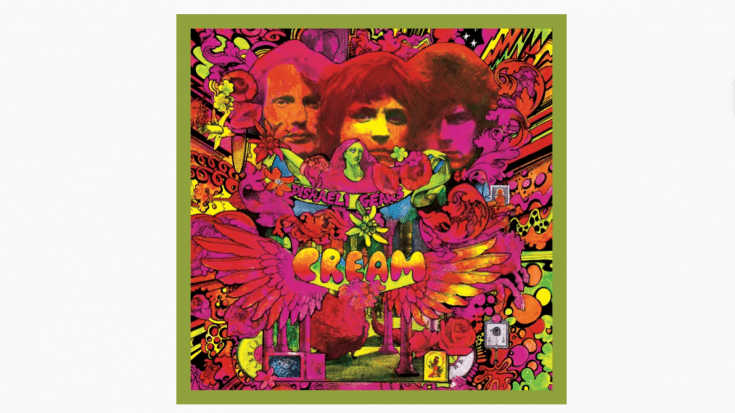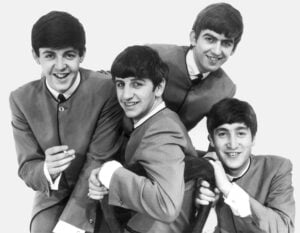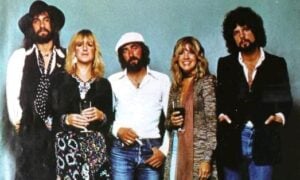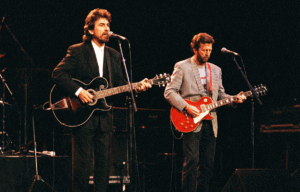10 Bands That Acquired Success With Their Second Album

via Cream/YouTube
Some bands take years to refine their sound, while others strike gold on their sophomore effort. We’re diving into 10 rock bands whose second albums stand as their best!
With rock’s long history, narrowing down the list wasn’t easy. We aimed to cover multiple decades and balance obvious picks with a few surprises that might spark debate. While some choices are no-brainers, others might challenge the usual consensus.
Still, one thing is clear—each of these second albums represents the peak of their band’s creativity, impact, and legacy. Whether universally celebrated or hotly contested, these records prove that sometimes, a band truly perfects their sound the second time around.
Nirvana – Nevermind (1991)
Nirvana set off a cultural detonator when they released Nevermind, which was not simply an album. Some contend that their real masterpiece is In Utero, but Nevermind was the album that made all the difference. It was listed by Loudwire as one of the best four grunge albums of all time, right up there with Superunknown, Ten, and Dirt.
In addition to its enormous impact, Nevermind is just full of catchy tunes. It begins with the quintessential grunge hit, “Smells Like Teen Spirit,” a song so well-known that knowing its riff has become a requirement for aspiring guitarists. However, the album’s genius doesn’t end there; “Something in the Way,” “In Bloom,” “Come As You Are,” and “Lithium” are as potent. Nevermind is a front-to-back masterpiece, and even the deeper cuts like “Breed,” “Drain You,” and “On a Plain” contribute to its development.
Nevermind was a bold, generation-defining album, thanks to Kurt Cobain’s unadulterated emotion and songwriting. Its influence hasn’t diminished nearly 35 years later; it continues to serve as a rallying call for outcasts everywhere.
Cream – Disraeli Gears (1967)
The first real supergroup was Cream, which included Jack Bruce, Eric Clapton, and Ginger Baker. They created a groundbreaking fusion of acid rock, jazz, and blues. Despite their short relationship, they had a significant influence on rock music.
Their seminal album from 1967, Disraeli Gears, continues to influence bands like Black Sabbath and has shaped the direction of heavy rock. It opens with the incredible duo “Strange Brew” and “Sunshine of Your Love,” which highlight Cream’s versatility from psychedelic grooves to blazing riffs. The album demonstrates their flexibility by striking a mix between raw bluesy grit (“SWLABR,” “Take It Back”) and beautiful harmonies (“World of Pain,” “Dance the Night Away”). Additionally, they incorporate a little of traditional British comedy with the witty “Mother’s Lament.”
Beyond just the music, Disraeli Gears’ daring sound experiments and vivid album art capture the lively, free-spirited atmosphere of the late ’60s. It remains a rock necessity more than half a century later.
Foo Fighters – The Colour and the Shape (1997)
Dave Grohl had the option to wallow in sorrow following Kurt Cobain’s untimely death, but instead, he threw himself into Foo Fighters, a solo endeavor that swiftly became one of the most successful rock bands of the 1990s. After a strong 1995 debut, Grohl put together a respectable lineup and released The Colour and the Shape in 1997, which is still regarded as the band’s best album.
Foo Fighters showcase their whole range across its 13 tracks, from the raw, high-energy punch of “Monkey Wrench” to the eerie opener “Doll.” “Walking After You” provides a beautiful acoustic contrast, while “My Hero” rises with epic intensity. Then there’s “Everlong,” which is possibly Grohl’s best song and combines passion and passion to create something truly remarkable.
Despite their remarkable consistency throughout their 30-year career, Foo Fighters’ most important record, The Colour and the Shape, demonstrates that they were more than just the drummer from Nirvana’s side project; they were a formidable rock force in their own right.
King’s X – Gretchen Goes to Nebraska (1989)
With a sound that is both complex and incredibly melodic, King’s X has always straddled the boundary between hard rock and progressive metal. Even though they never achieved great commercial success, their repertoire is full of treasures, and Gretchen Goes to Nebraska is their best-known work.
The record, which was inspired by a short narrative written by drummer Jerry Gaskill, combines soaring harmonies, dynamic changes, and a balance of explosive intensity and introspection. The album’s standout track is “Summerland,” a lovely acoustic ballad that is enhanced by dUg Pinnick’s heartfelt voice. While “Out of the Silent Planet” transports listeners into a psychedelic swirl before the contagious exuberance of “Over My Head” and “Don’t Believe It,” songs like “The Difference (In the Garden of St. Anne’s-on-the-Hill)” and “Pleiades” highlight their gentle side.
King’s X demonstrated they were genuinely in a class of their own by creating a genre-bending classic with Gretchen Goes to Nebraska, which continues to be popular today.
Stone Temple Pilots – Purple (1994)
While some fans argue that STP’s best work is Core (1992) or Tiny Music… Songs from the Vatican Gift Shop (1996), Purple is the band’s most comprehensive and self-assured album. It transformed their debut’s raw strength into something more vibrant and daring.
With huge successes like “Vasoline” and “Interstate Love Song,” Purple is a band that has moved past its grunge beginnings. The album displays a remarkable breadth, ranging from the gritty “Meatplow” to the dreamy “Lounge Fly” and the folk-tinged “Pretty Penny”. As a lighthearted homage to Johnny Mathis, the closer, “Kitchenware & Candybars,” even tucks in a lounge-style secret track, “My Second Album.”
Purple solidified STP’s position as one of the most adaptable rock groups of the 1990s with its blend of ferocity, melody, and experimentation. It is still the album that most people think of when they think of STP, and it continues to be the statement that best describes their sound.
Smashing Pumpkins – Siamese Dream (1993)
Many fans and critics consider Siamese Dream to be the quintessential Smashing Pumpkins album, even if Mellon Collie and the Infinite Sadness (1995) is an ambitious masterwork. Leaner, rawer, and more emotionally charged, it captures the band at their most intense and vulnerable.
Internal conflicts, including Billy Corgan’s despair, Jimmy Chamberlin’s heroin use, and the split between James Iha and D’arcy Wretzky, influenced the record. However, that darkness gave way to light. Songs like the melancholic yet dreamlike “Today” and the orchestral melancholy of “Disarm” are among Corgan’s most candid compositions. The soaring fuzz of “Rocket,” the mesmerizing layers of “Soma,” and the stinging “Cherub Rock” all highlight the band’s distinctive fusion of beauty and fury.
Deeply personal hardships can inspire eternal music, as seen by Siamese Dream, which continues to serve as a model for alternative rock decades later.
Garbage – Version 2.0 (1998)
As the drummer and co-founder of Garbage, Butch Vig helped create one of the most distinctive alt-rock bands of the 1990s. Vig is best known for producing such iconic bands as Nirvana, Green Day, and Foo Fighters. Garbage, led by the witty and ebullient Shirley Manson, created something new and distinctive by fusing pop, electronica, and grunge.
Even though their self-titled debut from 1995 included hits like “Stupid Girl” and “Only Happy When It Rains,” Version 2.0 elevated their sound. The title of the album is a lighthearted reference to the extensive use of technology in its production, which enhanced every aspect of Garbage’s appeal. Every song feels both futuristic and strongly connected to the 1990s, from the rebellious vigor of “I Think I’m Paranoid” to the dreamy sorrow of “You Look So Fine.”
Version 2.0 continues to be their most iconic and thrilling album, featuring classics like “Push It” and “When I Grow Up.”
Rainbow – Rising (1976)
Ritchie Blackmore was resolved to leave his own mark after splitting from Deep Purple. He formed Rainbow with the help of powerful vocalist Ronnie James Dio, and the band made a strong debut in 1975. However, Rising, which came out a year later, was the album that really solidified their place as hard rock royalty.
Rising is brief—just over thirty minutes—but utterly unrelenting. With the mesmerizing “Tarot Woman” and the thrilling “Do You Close Your Eyes,” side one makes a strong impression. However, Rainbow becomes legendary on side two. Together with symphonic keyboards, Dio’s soaring vocals, and Blackmore’s blazing guitar work, “Stargazer” and “A Light in the Black” create a sprawling fantasy epic.
Rising is regarded as one of Rainbow’s and Dio’s best albums due to its flawless fusion of fantasy, power, and pure musicianship. This is the album to listen to if you want to hear hard rock from the 1970s at its best.
Jane’s Addiction – Ritual de lo Habitual (1990)
Building on the success of Nothing’s Shocking, their ground-breaking debut, Jane’s Addiction released Ritual de lo Habitual in 1990, an album that solidified their place in the annals of alternative rock. It was bold and incredibly creative. This record became the band’s defining moment despite their internal turmoil, which was characterized by conflicting personalities and excessive drug usage.
Ritual de lo Habitual tackles racism, addiction, and personal tragedy, including the death of frontman Perry Farrell’s mother, in both its lyrics and its themes. The album is divided musically into two parts. The rebellious “Stop!” and the seductively funky “Been Caught Stealing” lead the pack in the first, which is a high-energy blast of dynamic hard rock. With the expansive, psychedelic “Three Days” and the eerie, Middle Eastern-inspired “Of Course,” the second half takes a more profound, experimental turn.
Ritual de lo Habitual is still a daring, unyielding masterwork that changed the definition of alternative rock.
Panic! at the Disco – Pretty. Odd. (2008)
Panic! at the Disco’s first three albums are typically the only ones discussed when talking about their best work. Their theatrical pop-punk hit, A Fever You Can’t Sweat Out (2005), and baroque synth-pop-influenced Vices & Virtues (2011) put them on the map. However, neither was able to fully convey the wonder like Pretty (2008). Odd., a daring, nostalgic change that confidently channels ELO, The Beach Boys, and The Beatles.
“We’re So Starving” humorously addresses the significant shift in sound from the outset, demonstrating the album’s acceptance of its new direction. A dreamy blend of charming folk-rock (“She Had the World”), gorgeous psychedelica (“Do You Know What I’m Seeing?”), and poignant balladry (“Northern Downpour”) follows the lively, sing-along charm of “Nine in the Afternoon,” which sets the mood.
Pretty. Odd., Panic!’s most ambitious and enduring masterwork, has highly layered orchestration and some of Brendon Urie and Ryan Ross’s best vocal performances.













